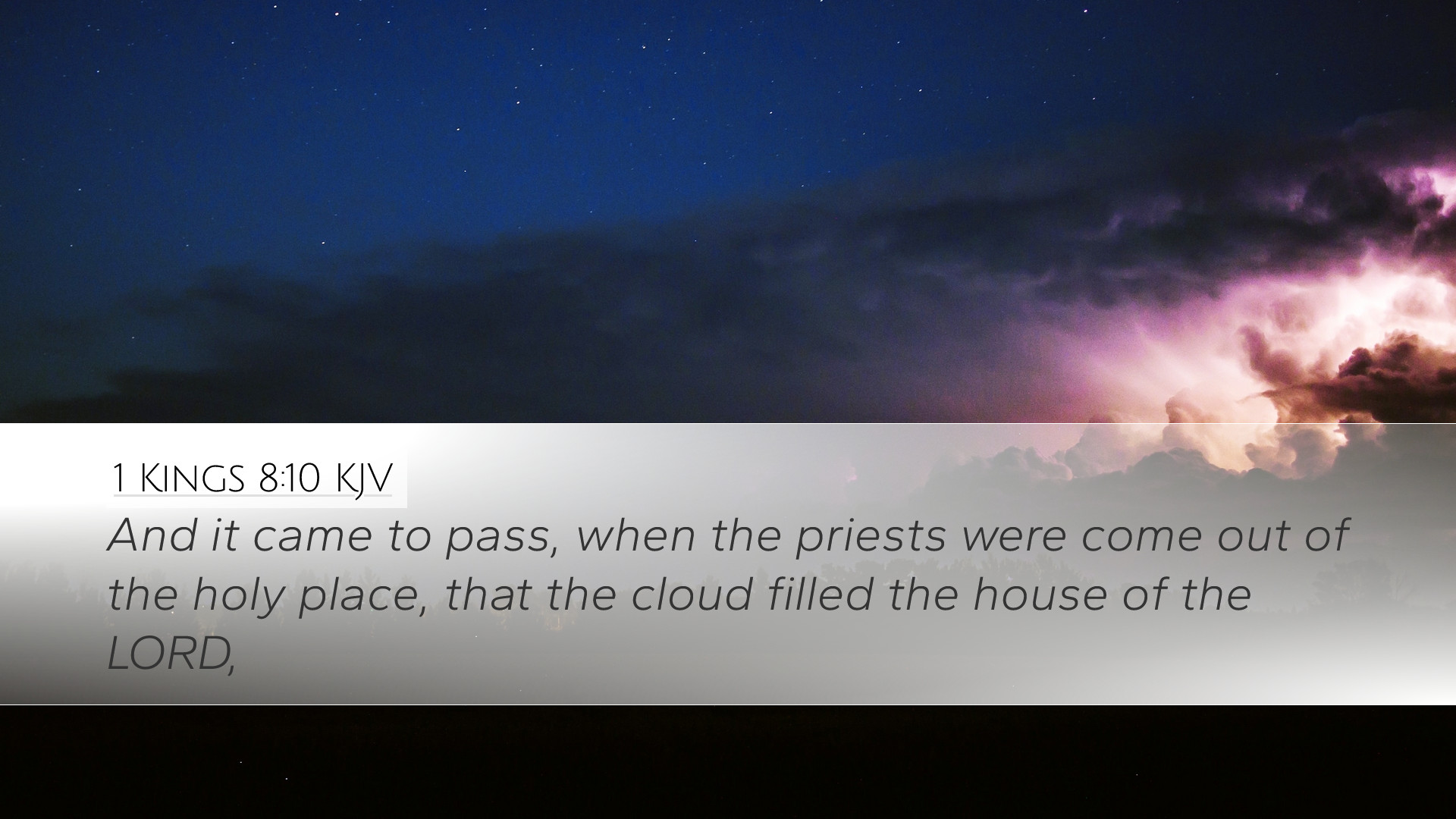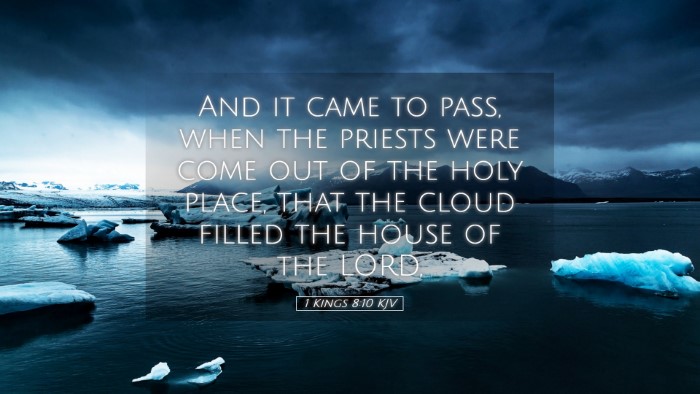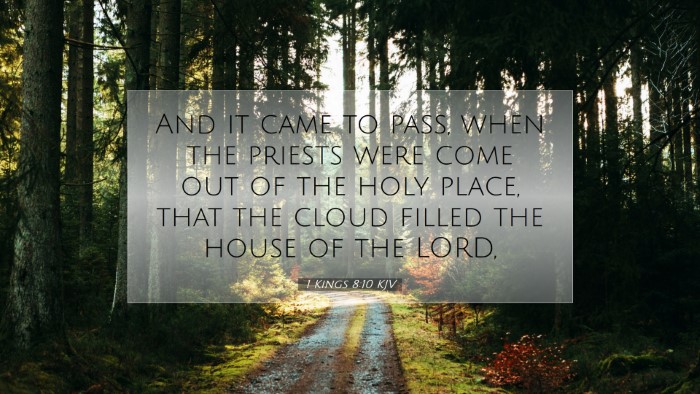Bible Commentary on 1 Kings 8:10
Verse: "And it came to pass, when the priests were come out of the holy place, that the cloud filled the house of the Lord."
Introduction
This verse is pivotal in the narrative of the dedication of Solomon's Temple, marking a significant moment where the presence of God manifests in a tangible way. Several esteemed commentaries provide insights into the theological and historical implications of this event.
Contextual Overview
The setting of 1 Kings 8 involves the culmination of King Solomon's efforts to build a majestic temple that would serve as a dwelling place for God among His people. Previous verses detail Solomon’s prayer of dedication, which emphasizes the significance of the temple as not merely a physical structure but as a representation of God’s covenant with Israel.
Insights from Matthew Henry
Presence of God: Matthew Henry often emphasizes the importance of God's presence among His people. In this verse, he highlights that the cloud signifies the glory of the Lord, a theme consistent with God's manifestation in the Old Testament. Henry notes that the filling of the temple with the cloud indicates divine affirmation of Solomon’s work and the acceptance of the temple as a place for worship.
Role of the Priests: Henry writes about the priests emerging from the holy place and how their service is integral to the worship of God. He suggests that the departure of the priests symbolizes the conclusion of a sacred duty, and the arrival of the cloud signifies God's acceptance of their ministry.
- Sign of God’s Approval: The cloud serves as a visible symbol of God’s approval and presence, underscoring that the temple is indeed God's dwelling place on earth.
- Theological Importance: The event foreshadows the ultimate fulfillment of God's presence through Christ, indicating that all worship and service are to be centered in Him.
Insights from Albert Barnes
Albert Barnes provides an exposition on the meaning of the cloud and its significance in the context of Israel's worship. He notes the following:
- Shekinah Glory: Barnes states that the cloud represents the Shekinah glory of God, a visible manifestation that dwelt between the cherubim on the mercy seat. This is a profound moment as it confirms God’s continual presence with His people.
- Connection to Other Biblical Events: Barnes draws connections to Exodus 40:34, where a similar cloud filled the tabernacle. This continuity emphasizes that God's covenant presence persists through the generations.
Insights from Adam Clarke
Adam Clarke expands on the implications of the cloud filling the temple. His insights include:
- Ceremonial Significance: Clarke elaborates on how the filling of the temple reflects the conclusion of the ceremonial aspects of the dedication. It was a divine affirmation that God has accepted the temple as a place for His name.
- Encouragement for Believers: He encourages believers to consider how this event prefigures the New Covenant where God's presence is no longer confined to a temple made with hands but dwells in the hearts of believers through the Holy Spirit.
Theological Implications
The appearance of the cloud at the dedication of the temple holds profound theological implications for worship and the presence of God among His people. The Old Testament repeatedly reflects God's desire to dwell among His people:
- God’s Desire for Relationship: This moment exemplifies God’s desire for a relational presence rather than an abstract deity. The physical manifestation reinforces that God is actively involved in the life of His people.
- Worship as Encounter: The filling of the temple with the divine cloud signals to worshipers that true worship is an encounter with God, transforming ceremonial practice into a powerful means of communion.
Conclusion
1 Kings 8:10 serves as a crucial reminder of God's glory and presence actively engaged with His covenant people. For pastors, students, and theologians, the implications of this verse extend beyond the historical narrative, inviting deeper reflection on the nature of divine worship and proximity to God. This verse encourages modern believers to cultivate an understanding of God’s manifest presence within the church and in their personal lives, fostering an environment where worship can thrive as a response to His glory and grace.


